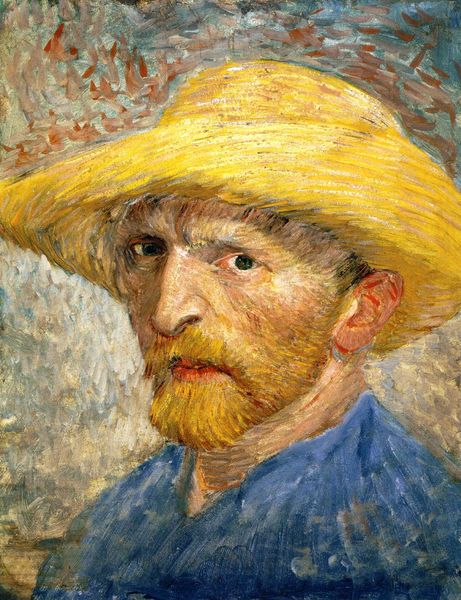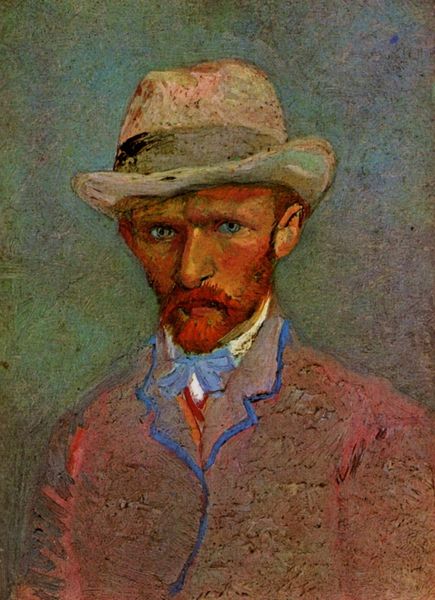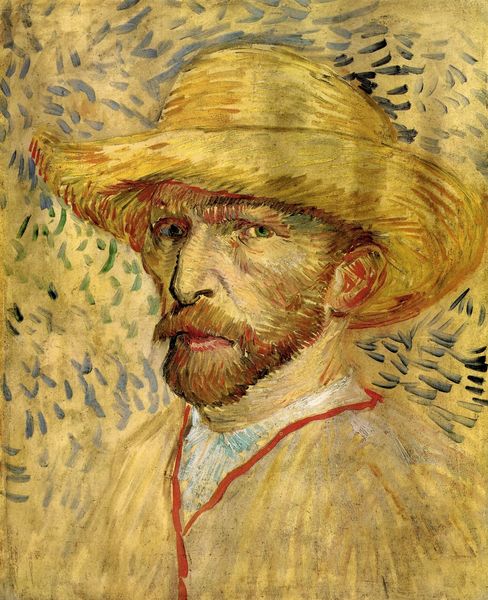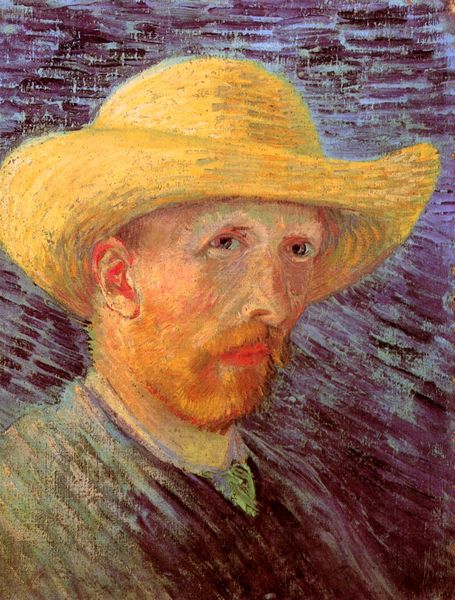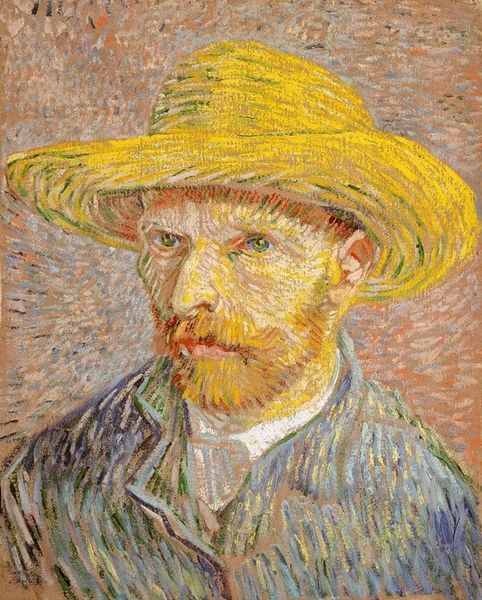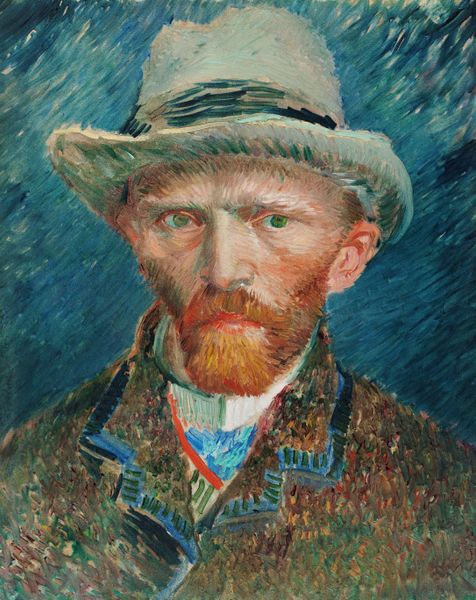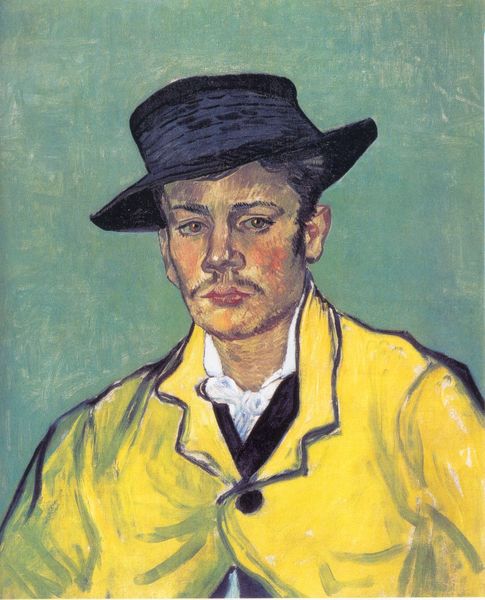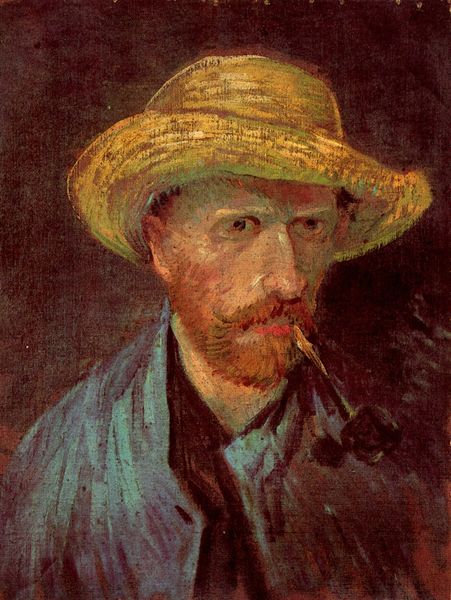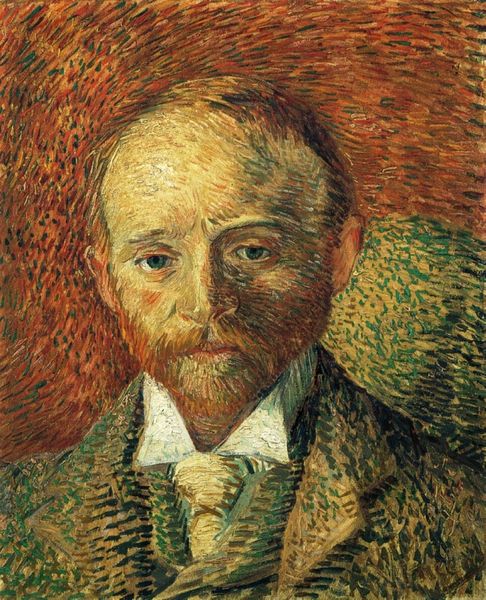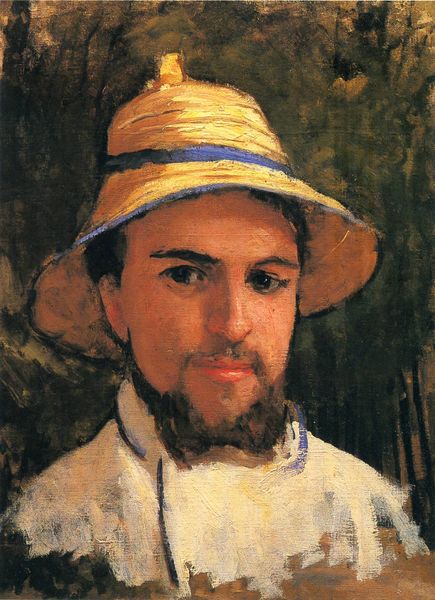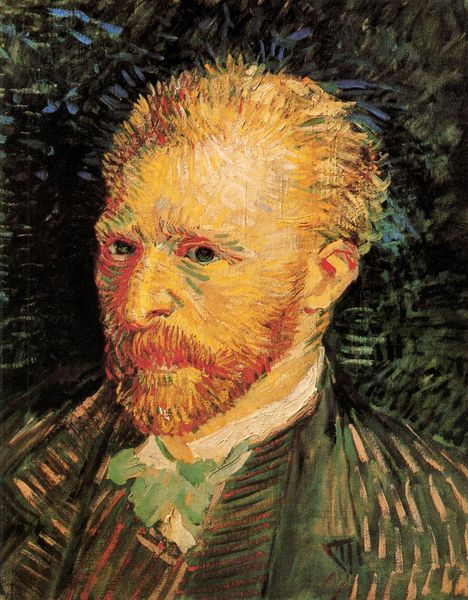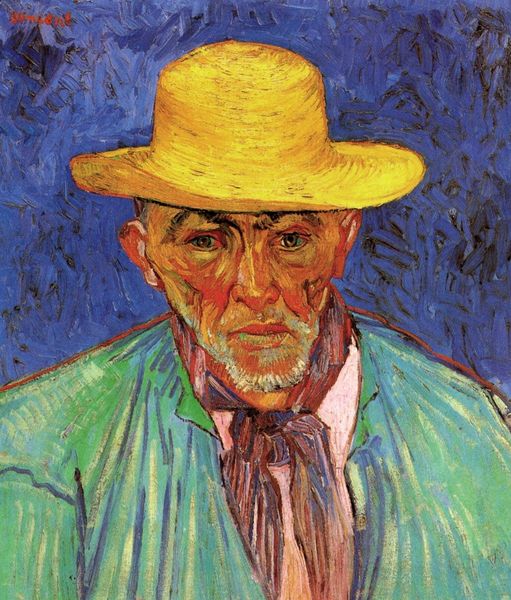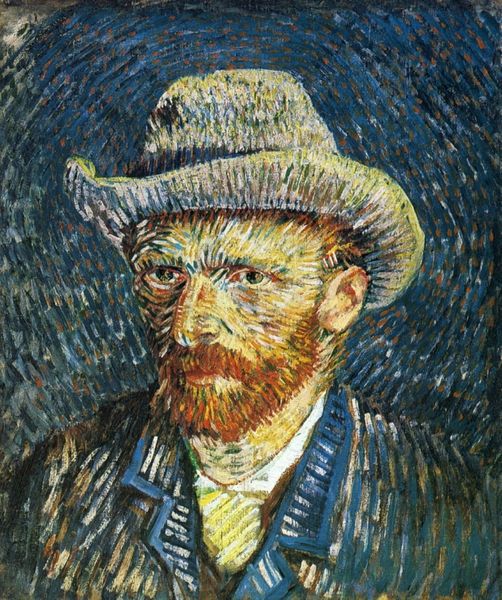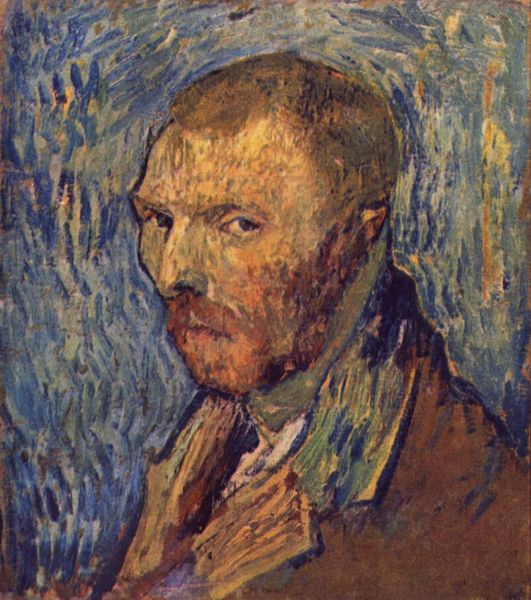
painting, oil-paint, impasto
#
portrait
#
self-portrait
#
painting
#
oil-paint
#
impasto
#
post-impressionism
Copyright: Public domain
Curator: Right, let's spend some time looking at Vincent van Gogh's "Self-Portrait with Straw Hat," painted in 1887. It resides here in the Van Gogh Museum in Amsterdam. Editor: The first thing I notice is...vulnerability. Not sadness, precisely, but a raw openness. It's in the set of his mouth and the slightly averted gaze, a touch of the hermit there in the way he regards you without quite meeting your eye. Curator: Van Gogh frequently depicted himself, especially during periods when he lacked funds to pay models. In a sense, he was using himself as a symbol, examining the artist’s place in society and his personal struggles. Editor: Using himself... that's intriguing. It feels almost like a performance. The straw hat itself could be a kind of stage prop, deflecting directness. He isn't quite engaging directly, almost hiding from us, but in full technicolor, which kind of defeats the whole exercise. Curator: Straw hats, beyond the practical use for laborers working the land, appear across portraits throughout art history, particularly associated with country life or leisure. You might say Van Gogh uses it in contrast with the more conventional dark suit, thus positioning himself carefully on both sides. There is some visual complexity in that dynamic. Editor: I love that thought—the farmer/artist dichotomy! It fits. And those frantic brushstrokes! Look how the colours vibrate next to each other. I mean, it’s a storm on canvas—a restless sea that is contained within the boundaries of his shape and that silly, slightly crooked hat! The impasto technique gives everything a tactile quality, like I could just reach out and touch a glob of paint. It really does bring a kind of three-dimensionality into play! Curator: His use of complementary colours in that period speaks to his understanding of colour theory but, importantly, goes beyond simply employing that system. It reveals, as you have noted, an emotional charge, expressing what it meant for him to explore the potential of being a Post-Impressionist painter. Editor: Looking at this, it isn’t simply a picture of a person wearing a hat, you know? This guy, our Vincent, almost explodes outward. It’s an amazing testament to him seeking to capture the felt feeling, a vibe, you might even say... something other and stranger than realism. Curator: Precisely! His personal interpretation overrides conventional representation, shaping it into something imbued with psychological depth. Thanks, that was insightful. Editor: Anytime. This exercise makes you wish you knew Van Gogh's first impression about us!
Comments
No comments
Be the first to comment and join the conversation on the ultimate creative platform.
